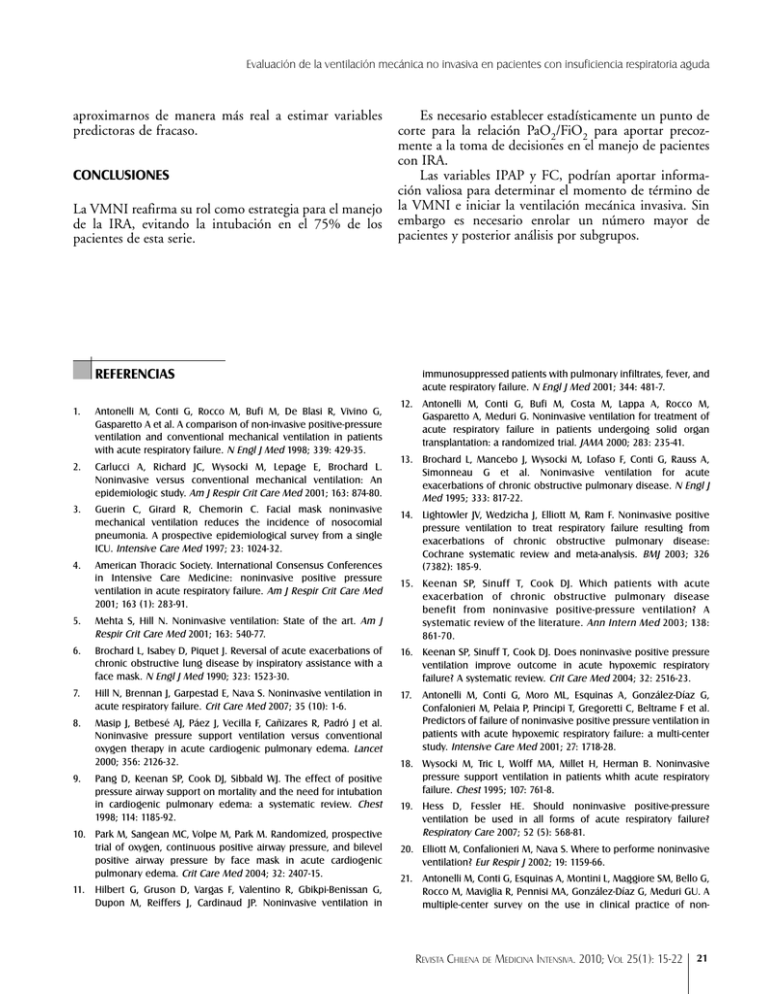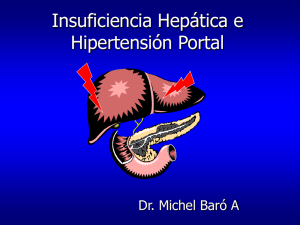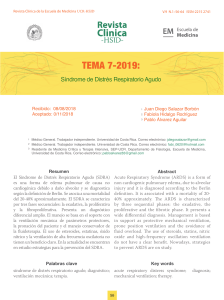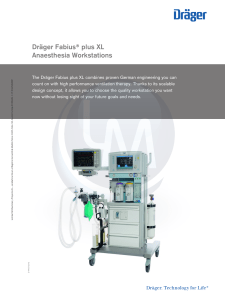aproximarnos de manera más real a estimar variables predictoras
advertisement

Evaluación de la ventilación mecánica no invasiva en pacientes con insuficiencia respiratoria aguda aproximarnos de manera más real a estimar variables predictoras de fracaso. CONCLUSIONES La VMNI reafirma su rol como estrategia para el manejo de la IRA, evitando la intubación en el 75% de los pacientes de esta serie. Es necesario establecer estadísticamente un punto de corte para la relación PaO2/FiO2 para aportar precozmente a la toma de decisiones en el manejo de pacientes con IRA. Las variables IPAP y FC, podrían aportar información valiosa para determinar el momento de término de la VMNI e iniciar la ventilación mecánica invasiva. Sin embargo es necesario enrolar un número mayor de pacientes y posterior análisis por subgrupos. REFERENCIAS 1. Antonelli M, Conti G, Rocco M, Bufi M, De Blasi R, Vivino G, Gasparetto A et al. A comparison of non-invasive positive-pressure ventilation and conventional mechanical ventilation in patients with acute respiratory failure. N Engl J Med 1998; 339: 429-35. 2. Carlucci A, Richard JC, Wysocki M, Lepage E, Brochard L. Noninvasive versus conventional mechanical ventilation: An epidemiologic study. Am J Respir Crit Care Med 2001; 163: 874-80. 3. Guerin C, Girard R, Chemorin C. Facial mask noninvasive mechanical ventilation reduces the incidence of nosocomial pneumonia. A prospective epidemiological survey from a single ICU. Intensive Care Med 1997; 23: 1024-32. 4. American Thoracic Society. International Consensus Conferences in Intensive Care Medicine: noninvasive positive pressure ventilation in acute respiratory failure. Am J Respir Crit Care Med 2001; 163 (1): 283-91. immunosuppressed patients with pulmonary infiltrates, fever, and acute respiratory failure. N Engl J Med 2001; 344: 481-7. 12. Antonelli M, Conti G, Bufi M, Costa M, Lappa A, Rocco M, Gasparetto A, Meduri G. Noninvasive ventilation for treatment of acute respiratory failure in patients undergoing solid organ transplantation: a randomized trial. JAMA 2000; 283: 235-41. 13. Brochard L, Mancebo J, Wysocki M, Lofaso F, Conti G, Rauss A, Simonneau G et al. Noninvasive ventilation for acute exacerbations of chronic obstructive pulmonary disease. N Engl J Med 1995; 333: 817-22. 14. Lightowler JV, Wedzicha J, Elliott M, Ram F. Noninvasive positive pressure ventilation to treat respiratory failure resulting from exacerbations of chronic obstructive pulmonary disease: Cochrane systematic review and meta-analysis. BMJ 2003; 326 (7382): 185-9. 5. Mehta S, Hill N. Noninvasive ventilation: State of the art. Am J Respir Crit Care Med 2001; 163: 540-77. 15. Keenan SP, Sinuff T, Cook DJ. Which patients with acute exacerbation of chronic obstructive pulmonary disease benefit from noninvasive positive-pressure ventilation? A systematic review of the literature. Ann Intern Med 2003; 138: 861-70. 6. Brochard L, Isabey D, Piquet J. Reversal of acute exacerbations of chronic obstructive lung disease by inspiratory assistance with a face mask. N Engl J Med 1990; 323: 1523-30. 16. Keenan SP, Sinuff T, Cook DJ. Does noninvasive positive pressure ventilation improve outcome in acute hypoxemic respiratory failure? A systematic review. Crit Care Med 2004; 32: 2516-23. 7. Hill N, Brennan J, Garpestad E, Nava S. Noninvasive ventilation in acute respiratory failure. Crit Care Med 2007; 35 (10): 1-6. 17. 8. Masip J, Betbesé AJ, Páez J, Vecilla F, Cañizares R, Padró J et al. Noninvasive pressure support ventilation versus conventional oxygen therapy in acute cardiogenic pulmonary edema. Lancet 2000; 356: 2126-32. 9. Pang D, Keenan SP, Cook DJ, Sibbald WJ. The effect of positive pressure airway support on mortality and the need for intubation in cardiogenic pulmonary edema: a systematic review. Chest 1998; 114: 1185-92. 10. Park M, Sangean MC, Volpe M, Park M. Randomized, prospective trial of oxygen, continuous positive airway pressure, and bilevel positive airway pressure by face mask in acute cardiogenic pulmonary edema. Crit Care Med 2004; 32: 2407-15. 11. Hilbert G, Gruson D, Vargas F, Valentino R, Gbikpi-Benissan G, Dupon M, Reiffers J, Cardinaud JP. Noninvasive ventilation in Antonelli M, Conti G, Moro ML, Esquinas A, González-Díaz G, Confalonieri M, Pelaia P, Principi T, Gregoretti C, Beltrame F et al. Predictors of failure of noninvasive positive pressure ventilation in patients with acute hypoxemic respiratory failure: a multi-center study. Intensive Care Med 2001; 27: 1718-28. 18. Wysocki M, Tric L, Wolff MA, Millet H, Herman B. Noninvasive pressure support ventilation in patients whith acute respiratory failure. Chest 1995; 107: 761-8. 19. Hess D, Fessler HE. Should noninvasive positive-pressure ventilation be used in all forms of acute respiratory failure? Respiratory Care 2007; 52 (5): 568-81. 20. Elliott M, Confalionieri M, Nava S. Where to performe noninvasive ventilation? Eur Respir J 2002; 19: 1159-66. 21. Antonelli M, Conti G, Esquinas A, Montini L, Maggiore SM, Bello G, Rocco M, Maviglia R, Pennisi MA, González-Díaz G, Meduri GU. A multiple-center survey on the use in clinical practice of non- REVISTA CHILENA DE MEDICINA INTENSIVA. 2010; VOL 25(1): 15-22 21


